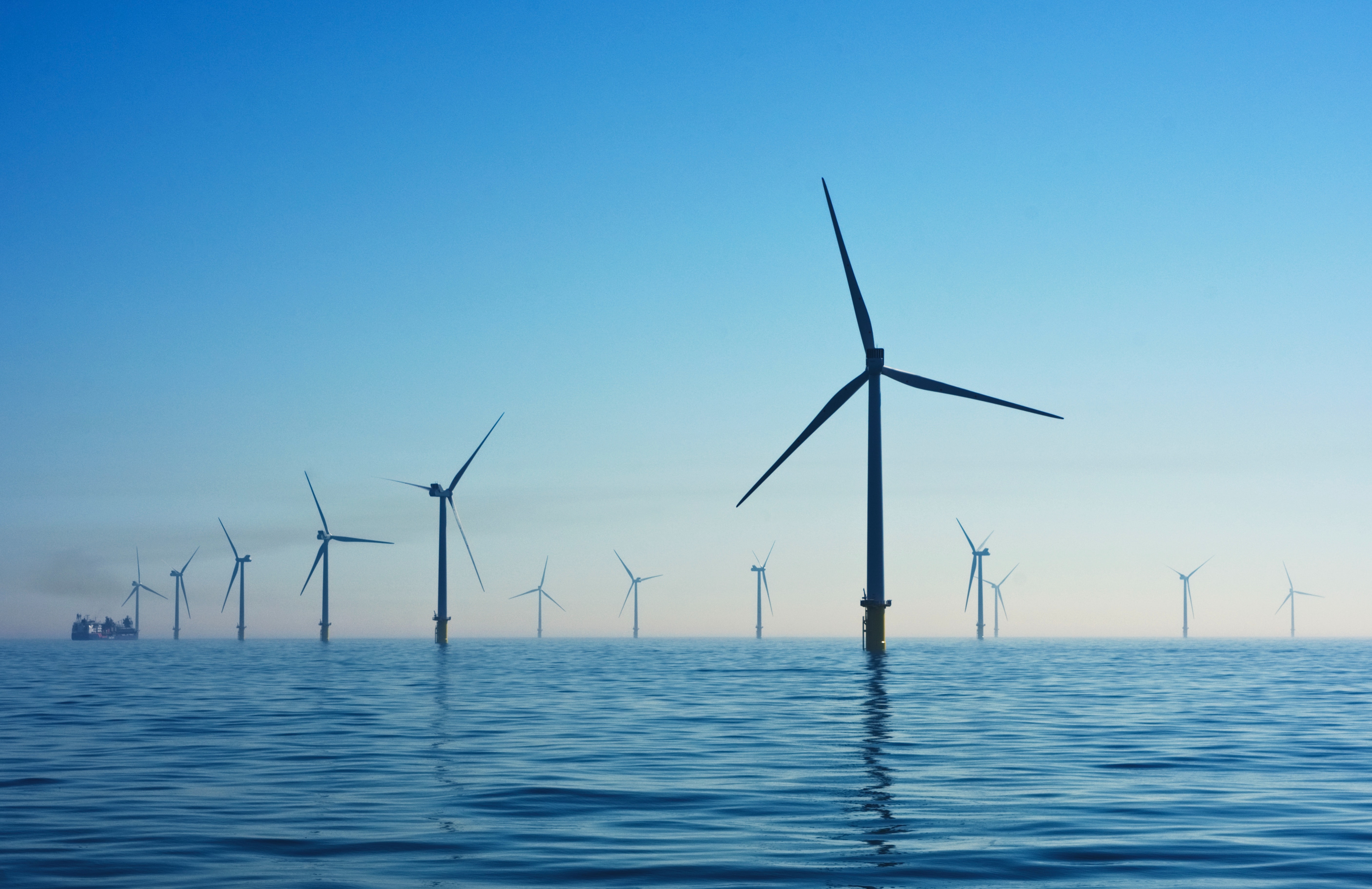Offshore wind energy – South Africa’s untapped resource
DOI:
https://doi.org/10.17159/2413-3051/2020/v31i4a7940Keywords:
renewable energy; resource assessment; site selection; offshore wind energy potential; GIS spatial analysisAbstract
In the context of the Anthropocene, the decoupling of carbon emissions from electricity generation is critical. South Africa has an ageing coal power fleet, which will gradually be decommissioned over the next 30 years. This creates substantial opportunity for a just transition towards a future energy mix with a high renewable energy penetration. Offshore wind technology is a clean electricity generation alternative that presents great power security and decarbonisation opportunity for South Africa. This study estimated the offshore wind energy resource available within South Africa’s exclusive economic zone (EEZ), using a geographic information system methodology. The available resource was estimated under four developmental scenarios. This study revealed that South Africa has an annual offshore wind energy production potential of 44.52 TWh at ocean depths of less than 50 m (Scenario 1) and 2 387.08 TWh at depths less than 1 000 m (Scenario 2). Furthermore, a GIS-based multi-criteria evaluation was conducted to determine the most suitable locations for offshore wind farm development within the South African EEZ. The following suitable offshore wind development regions were identified: Richards Bay, KwaDukuza, Durban, and Struis Bay. Based on South Africa’s annual electricity consumption of 297.8 TWh in 2018, OWE could theoretically supply approximately 15% and 800% of South Africa’s annual electricity demand with offshore wind development Scenario 1 and 2 respectively.
Downloads
References
Andrews, J. and Jelley, N. 2007. Energy science: Principles, technologies, and impacts. Oxford: Oxford University Press.
Ang, B.W. and Su, B. 2016. Carbon emission intensity in electricity production: A global analysis. Energy Policy 94:56–63.
Bauer, L. amd Matysik, S. 2019. Vestas V164-8.0 - 8,00 MW - Wind turbine. Available online at https://en.wind-turbine-models.com/turbines/318-vestas-v164-8.0 [2019, October 03].
Bosch, J., Staffell, I. and Hawkes, A.D. 2018. Temporally explicit and spatially resolved global offshore wind energy potentials. Energy 163:766–781.
Busby, R. (2012). Wind power - the industry grows up. Available online at https://app.knovel.com/web/view/khtml/show.v/rcid:kpWPTIGU01/cid:kt00C4HSM3/viewerType:khtml/?page=1andview=collapsedandzoom=1andq=rayleigh wind speed distribution [2019, May 02].
Copernicus Climate Change Service (C3S). 2017. ERA5: Fifth generation of ECMWF atmospheric reanalyses of the global climate. Copernicus Climate Change Service Climate Data Store. Available online at https://cds.climate.copernicus.eu/cdsapp#!/home [2019, June 19].
DOE [Department of Energy]. 2019. IPP Projects. Available online at https://www.ipp-projects.co.za/ [2019, April 19].
Dupont, E., Koppelaar, R. and Jeanmart, H. 2018. Global available wind energy with physical and energy return on investment constraints. Applied Energy 209 (September 2017): 322–338.
Dvorak, M.J., Archer, C.L. and Jacobson, M.Z. 2010. California offshore wind energy potential. Renewable Energy 35(6): 1244–1254.
Elsner, P. 2019. Continental-scale assessment of the African offshore wind energy potential: Spatial analysis of an under-appreciated renewable energy resource. Renewable and Sustainable Energy Reviews 104(January): 394–407.
Eurek, K., Sullivan, P., Gleason, M., Hettinger, D., Heimiller, D. and Lopez, A. 2017. An improved global wind resource estimate for integrated assessment models. Energy Economics 64: 552–567.
Fakir, S. 2015. COP 21 and South Africa’s position. Engineering News. Available online at www.engineeringnews.co.za/article/cop-21-and-south-africas-position-2015-10-09 [2019, June 8].
Flanders Marine Institute. 2014. Union of the ESRI Country shapefile and the Exclusive Economic Zones (version 2). Available online at http://www.marineregions.org/. [2019, September 24].
Hartley, F., Ireland, G., Merven, B., Burton, J., Ahjum, F., McCall, B., Caetano, T., Wright, J., et al. 2017. The developing energy landscape in South Africa: Technical Report. (October). Available online at http://www.erc.uct.ac.za/sites/default/files/image_tool/images/119/Researchdocs/ERC [2019, March 12].
Hennermann, K. 2019. What is ERA5 - Copernicus Knowledge Base - ECMWF. Available online at https://confluence.ecmwf.int/display/CKB/WhatisERA5 [2019, September 24]
Hong, L. and Möller, B. 2011. Offshore wind energy potential in China: Under technical, spatial and economic constraints. Energy 36(7): 4482–4491.
Malczewski, J. 2004. GIS-based land-use suitability analysis: A critical overview. Progress in Planning 62(1): 3–65. doi: 10.1016/j.progress.2003.09.002.
McGlade, C. and Ekins, P. 2015. The geographical distribution of fossil fuels unused when limiting global warming to 2 C. Nature 517, 187-190.
Meinshausen, M., Meinshausen, N., Hare, W., Raper, S., Frieler, K., Knutti, R., Frame, D. and Allen, M. 2009. Green-house-gas emission targets for limiting global warming to 2 C. Nature 458:1158.
Musial, W., Heimiller, D., Beiter, P., Scott, G. and Draxl, C. 2016. Offshore wind energy resource assessment for the United States. (September): 88.
Rae, G. 2019. Offshore wind energy resource assessment of the South African exclusive economic zone. Unpublished Masters thesis. Stellenbosch: Stellenbosch University.
Saaty, T.L. 1980. The analytic hierarchy process: Planning, priority setting, resource allocation. European Journal of Operational Research 9(1): 97–98.
UNEP-WCMC. 2019. Protected area profile for South Africa from the world database of protected areas, October 2019. Available online at www.protectedplanet.net. [2019, May 17].
UNFCCC. 2015. Adoption of the Paris Agreement. Experimental Mechanics 8(11): 513–519.
Weatherall, P., Marks, K.., Jakobsson, M., Schmitt, T., Tani, S., Arndt, J.., Rovere, M., Chayes, D., et al. 2015. A new digital bathymetric model of the world’s oceans. Earth and Space Science, 2. doi: 10.1002/2015EA000107
Yamaguchi, A. and Ishihara T. 2014. Assessment of offshore wind energy potential using mesoscale model and geo-graphic information system. Renewable Energy 69: 506–15. https://doi.org/10.1016/j.renene.2014.02.024.

Downloads
Published
Issue
Section
License
Copyright (c) 2020 Gordon Rae, Gareth Erfort

This work is licensed under a Creative Commons Attribution-ShareAlike 4.0 International License.



.png)